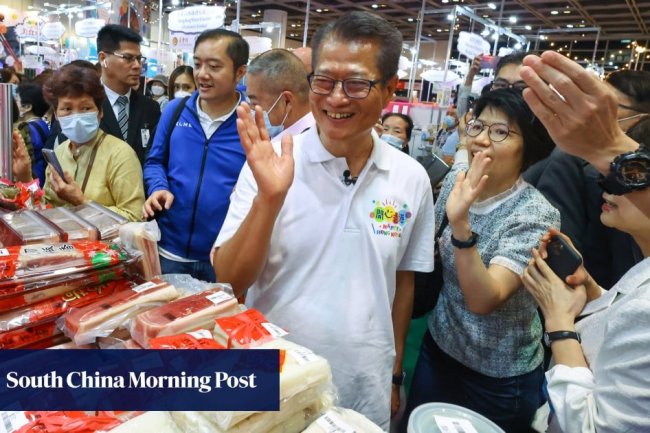Fed interest rate pause set to give China room to focus on its economic stability
2023.05.04 20:30China now has more policy space to fund the weak links of the world’s second-largest economy after the US Federal Reserve hinted at an imminent pause of its aggressive interest rate increase cycle that has haunted emerging markets and triggered calls to reduce use of the US dollar, analysts said.The waning overseas spillover, they added, would allow Beijing’s policymakers to concentrate on shoring up the domestic economy, especially as the recovery of the manufacturing sector continues to lag behind, while more is needed to boost the property market.The People’s Bank of China (PBOC) set the daily yuan reference rate at 6.9054 against the US dollar on Thursday, strengthening from 6.9240 on the previous trading day before the five-day “golden week” holiday, which ended on Wednesday.This was despite its US counterpart earlier raising its benchmark lending rate to the highest level since September 2007 after lifting the range by 25 basis points to between 5 and 5.25 per cen


China now has more policy space to fund the weak links of the world’s second-largest economy after the US Federal Reserve hinted at an imminent pause of its aggressive interest rate increase cycle that has haunted emerging markets and triggered calls to reduce use of the US dollar, analysts said.
The waning overseas spillover, they added, would allow Beijing’s policymakers to concentrate on shoring up the domestic economy, especially as the recovery of the manufacturing sector continues to lag behind, while more is needed to boost the property market.
The People’s Bank of China (PBOC) set the daily yuan reference rate at 6.9054 against the US dollar on Thursday, strengthening from 6.9240 on the previous trading day before the five-day “golden week” holiday, which ended on Wednesday.
This was despite its US counterpart earlier raising its benchmark lending rate to the highest level since September 2007 after lifting the range by 25 basis points to between 5 and 5.25 per cent.
China’s central bank also kept the rate of the seven-day reverse repo, a regular liquidity injection tool, unchanged at 2 per cent when it sold 33 billion yuan (US$4.8 billion) on Thursday morning.
“It would partly alleviate the pressure on yuan exchange rates,” said Raymond Yeung, chief Greater China economist at ANZ Bank.
“Overall, China will continue to focus on domestic issues and economic stability.”
Beijing’s policymakers need to judge if there is a turning point amid the US dollar upcycle, but China will face less obstacles for its policy loosening, largely speculated to be further cuts to the amount that banks set aside for deposits or other ways of liquidity injection, Yeung added.
The monetary support has become more obvious after the Politburo warned about insufficient demand and the lack of a strong internal driving force in its quarterly economic analysis conference last week.
Zhou Hao, chief economist at Guotai Junan International, said uncertainty concerning US monetary policy will abate as the current round of interest rate increases is close to its end, although it does mean a quick upturn in economic growth.
“The quasi-stagflation situation of the US economy may continue,” he said.
In the first quarter, the United States was China’s third largest export destination after the Association of Southeast Asian Nations (Asean) and the European Union.
Capital tends to flow out of China as the US dollar becomes stronger, but the flexible yuan exchange rate, coupled with the country’s strict capital control, is a key tool used by Beijing to absorb external spillover shocks, and enable it to focus on domestic economic growth and the labour market.
The onshore yuan closed at 6.9181 on Thursday, while the US dollar index – which measures its strength against major international currencies – fell to 101.3 on Wednesday from a high of 114 in late September.
“China is a super-large economy, so we must insist on independent monetary policy and adjust it mainly according to the domestic macroeconomic and price situation,” Zou Lan, head of the PBOC’s monetary policy department said last month.
“A flexible exchange rate formation mechanism helps release external pressure in a timely manner, and increases the manoeuvring space for independent monetary policy.”
While the US Federal Reserve has increased its interest rate by more than 400 basis points since March last year, Beijing has lowered the rate of its one-year medium-term lending facility by 10 basis points, while it has slashed the five-year loan prime rate – a market benchmark linked with mortgage rates – by a total of 30 basis points.
What's Your Reaction?













